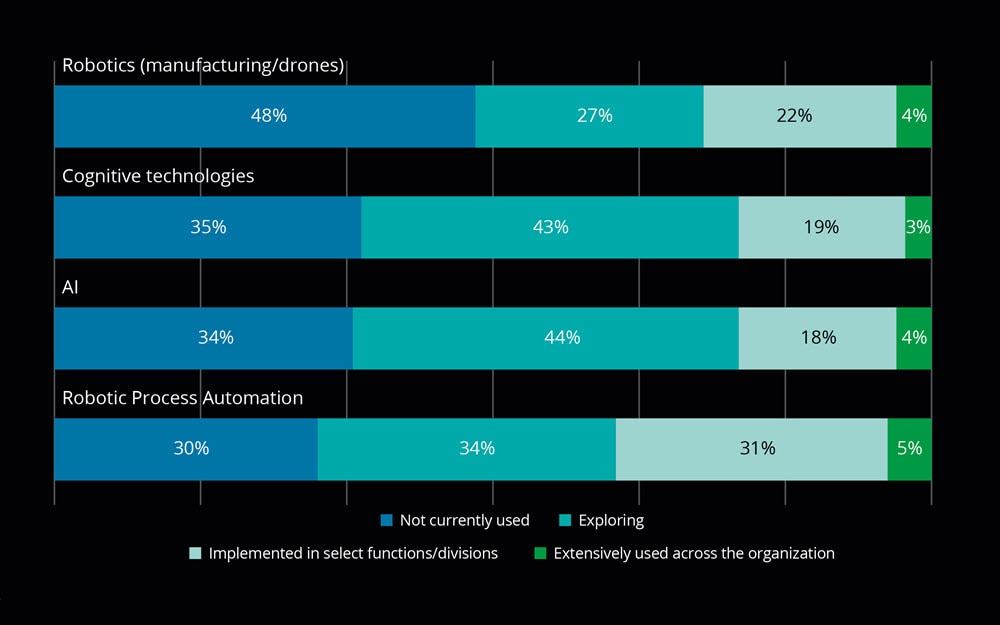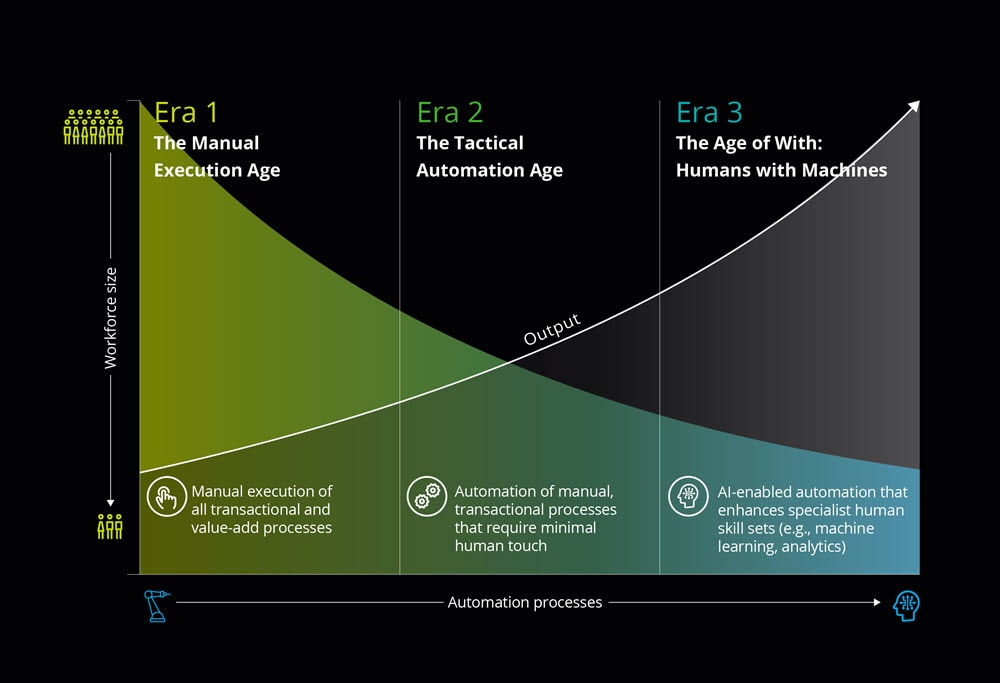Article

Intelligent automation and human-machine collaboration
Your business processes with speed and precision
Organisations that want to embrace the Age of With™ to automate processes and promote human-machine collaboration will need to think about their workforce in a new holistic way—that includes digital workers. That means their organisation chart might now show digital workers alongside human workers. It means they will adopt a progressive view of automation that transcends conventional notions of enterprise software or outsourced solutions. In the Age of With, artificial intelligence with automation delivers business processes with speed and precision, and a human workforce with the freedom to focus on what is important.
Explore Content
- Beyond bots: Human-AI interaction
- AI, cognitive technologies, and RPA
- Increasing human AI interaction
- The evolution of automation
- Five questions?
Beyond bots: Human-AI interaction
When people encounter something new, it’s human nature to compare it to things we already know. But executives seeking to adopt intelligent automation may struggle to realise its benefits if they don’t consciously set aside a few pre-existing beliefs. The Age of With requires thinking beyond bots—it’s the future of human-AI interaction.
The first belief to shed is that intelligent automation is just like conventional software. Adopting digital workforce management and treating digital workers as a part of the workforce—not software applications or outsourced functions—can put organisations squarely on the path to enhancing human judgement and human-machine collaboration and delivering actionable insights.
The second belief to leave behind is that intelligent automation is like conventional outsourcing. If an automation is not achieving its goals or it just breaks, organisations cannot view it as an IT problem. The business owner must have full-stop accountability for his or her digital workforce.
AI, cognitive technologies, and RPA
AI and related technologies are not a future direction. They’re here now. A majority of organisations surveyed by Deloitte are already either exploring, implementing in select functions/divisions, or using these technologies extensively across their organisation.
AI, cognitive technologies, and RPA
Organisations that are ready to evolve beyond a simple rule-based RPA should look at what their automations are doing, and even more importantly, are not doing—i.e., where does intelligent automation pass the process to a human, and what does the human need to do at that stage?
Looking at those handoffs enables organisations to identify opportunities to leverage probabilistic inference or algorithmic analysis of the data to make predictions. By going from clearly defined “if-then” logic to machine learning algorithms, organisations can bring intelligent automation to more of the work done by humans and leave human employees to focus on tasks requiring unique, innately human skills.
At the same time, advancing the evolution of automation at your organisation and showcasing the execution of complex, knowledge-based tasks is a sound way to increase confidence and understanding across the organisation.
The evolution of automation
Five questions to add speed and precision to business processes in the Age of With
- Is your approach to automation holistic and enterprise-wide?
- Is your automation program supported by business, IT, and functional leadership?
- Do you have an initial pipeline of opportunities with clearly defined ROI and timeline?
- What implementation prerequisites do you need to address before starting an automation program (e.g., functional centralization, process standardization, digitisation, etc.)?
- How prepared are you to instill a culture of innovation and foster adoption of emerging technologies?
Recommendations
Robotic Process Automation explained
A revolution in business processes




